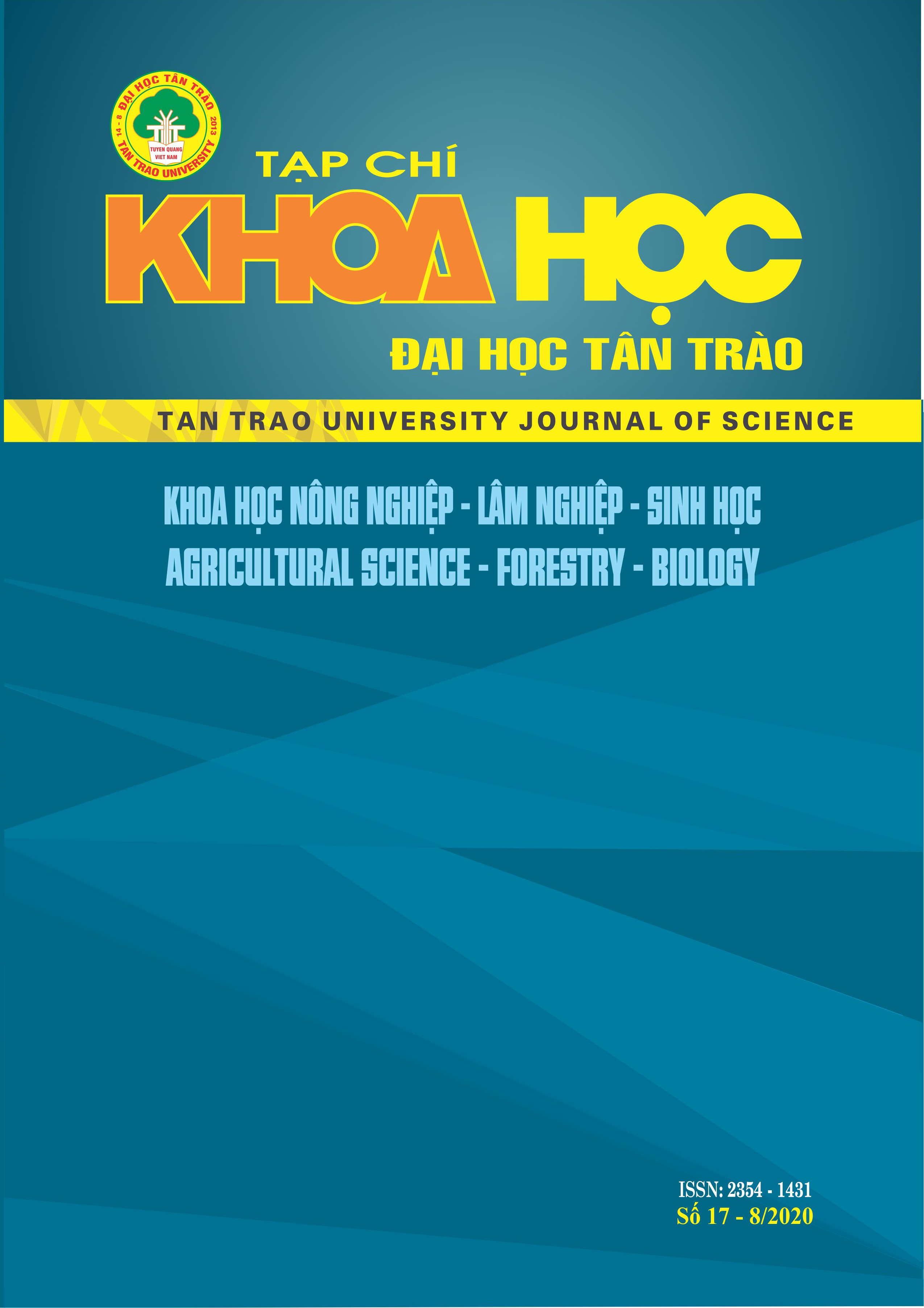Study on biological characteristics, production capacity and economic efficiency of the eastern spot-billed duck (anas poecilorhyncha zonorhyncha) raised in households in Ninh Binh Province
DOI:
https://doi.org/10.51453/2354-1431/2020/372Keywords:
Biological characteristics, production capacity, growth, the wild ducksAbstract
The young Eastern spot-billed ducks raised in households in Ninh Binh province have brown-gray on the upperpart from the head to tail. The neck and breast feathers are yellow and the back has typical yellow spots. The head has a yellow stripe down the neck and the eyes have a black line extending back. The legs are black. The adult ducks have gray striped body and a black speculum with a yellow tip. The tail feather has dark brownish and light brown edge, the wings are light blue. The male’s head has two white stripes. The feathers under neck is white, the eyes have dark brown with black line feathers extending to the back. They have upturned tail with a few curly feathers and typical sound. The female has a smaller head with light brown eyes and quack-quack sound. The tail has straight feathers. The survival rate of the Eastern spot-billed ducks until 21 weeks of age is over 98%. The body weight at birth was about 42g. The weight of an adult male and female is 1,452.21g and 1,264.92g, respectively. The amount of feed consumption to increase the weight of 1 kg from birth to 21 weeks of age is 7.43 kg and 8.07 kg in male and female, respectively. The percentage of carcasses as well as the percentage of thigh meat plus breast meat between males and females is 63.80 - 62.94% and 48.23 - 51.30%, respectively.
Downloads
References
1. Nguyen Van Ban (2000), research on some biological characteristics and production features of Co duck, Khaki Campbell and F1 crossbreeds breeding in Thanh Liem, Ha Nam, PhD thesis in Biology, Hanoi University of Education.
2. Nguyen Duc Cuong (2017), "Research on the adaptability of the breed" Mallard "was domesticated in Tran Yen district, Yen Bai province ", scientific research report of Department of Science and Technology of Yen Bai province, p. 30 - 36.
3. Nguyen Thi Minh, Nguyen Duc Trong, Nguyen Thi Thuy Nghia and Dong Thi Quyen (2007), "Research on biological characteristics and production ability of the Zhe Giang duck", Scientific report of livestock institute. p. 62 – 69.
4. Luong Tat Nhay (1994), Growth characteristics for meat and duck feathers CV Super M raised in Northern Vietnam, PhD thesis, Vietnam Institute of Agricultural Science and Technology.
5. Nguyen Duc Trong, Nguyen Van Duy, Hoang Van Tieu, Vuong Lan Anh, Nguyen Thi Thuy Nghia, Dong Thi Quyen, Vu Hoang Chung and Hoang Van Truong (2010), "Characteristics of appearance and production capacity of the cross-breed of grass duck and Zhe Giang duck", Scientific report 2010 - National Institute of Livestock Production, p. 126 - 135.
6. Nguyen Hoang Thinh, Tran Bich Phuong and Nguyen Dang Cuong (2018), meat production ability of mallard duck (Anas superciliosa), Publisher: Vietnam Academy of Agriculture, Hanoi p. 39 - 48.
7. Phung Duc Tien, Nguyen Ngoc Dung, Le Thi Nga, Vu Duc Canh, Nguyen Thi Huong, Pham Thi Xuan, Le Thi Cam, Tran Thi Thu Hang, Nguyen Thi Luyen (2010), Select SD ducks bred varieties. Scientific report 2007 National Institute of Livestock Production. Genetic part like pets. Hanoi, 2010.
Downloads
Published
How to Cite
Issue
Section
License

This work is licensed under a Creative Commons Attribution-ShareAlike 4.0 International License.
All articles published in SJTTU are licensed under a Creative Commons Attribution-ShareAlike 4.0 International (CC BY-SA) license. This means anyone is free to copy, transform, or redistribute articles for any lawful purpose in any medium, provided they give appropriate attribution to the original author(s) and SJTTU, link to the license, indicate if changes were made, and redistribute any derivative work under the same license.
Copyright on articles is retained by the respective author(s), without restrictions. A non-exclusive license is granted to SJTTU to publish the article and identify itself as its original publisher, along with the commercial right to include the article in a hardcopy issue for sale to libraries and individuals.
Although the conditions of the CC BY-SA license don't apply to authors (as the copyright holder of your article, you have no restrictions on your rights), by submitting to SJTTU, authors recognize the rights of readers, and must grant any third party the right to use their article to the extent provided by the license.


